The history and development of mobile gaming platforms
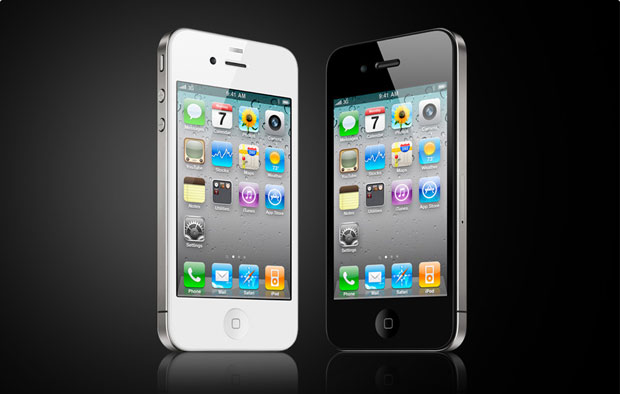
Over the past 10 years, the mobile phone has firmly entered the cycle of modern life. For these same 10 years, the giant evolutionary path has been traversed, turning a cell phone into a gaming, multimedia Internet device. Now I want to tell you about the history of the platforms for the phones that have received the most popularity among gamers ... And about the path that these pioneers of mobile gaming have traveled. And also about the rumors and prospects for the development of this direction. Well, well, let's start!
Content:
')
- About the first phones and the first JAVA midlets
- Nokia N-GAGE, and the first death from the PSP
- The release of a record number of Java games
- N-GAGE 2.0, sunset without dawn
- The emergence of a new player - iPhoneOS (now iOS)
- Perspectives, rumors.
1. About the first phones and the first JAVA midlets

After the surge of mobile phones in the late 90s, manufacturers, realized that cell phones have great prospects for development. The main brake on the way of the mass introduction of the then devices was their tremendous price. But already at the turn of 2001-2002, there are mass offers with an average price; this is no longer $ 1,000 per handset, but several times less. It was at this point that the main phone providers agreed that a new software platform was needed for the further development of telephony. At that time there were two clear contenders for this place. It was BREW (Binary Runtime Environment for Wireless), developed by Qualcomm and Java 2 Micro Edition (J2ME). Subsequently, the development of Qualcomm gave way to J2ME, the rejection of it was the programmatic closure and licensing agreements that obliged manufacturers to pay for the use of the platform. Java was on the side of its simplicity and openness, because the platform was originally written for low-power and non-power-consuming devices like a pager, it also absolutely did not require any license fees or investments. Yes, and Java at that time already had a large number of developers, potentially ready to write mobile applications.
In 2001-2002, a scattering of models with J2ME support appeared on the market, some of which were a real breakthrough. For example, Motorola took the States by storm, and in Europe, Siemens and Nokia, with their massive Si SL45i / S45 / M50 and Nokia 6310i and 3310, triumphed.

An interesting fact is that Motorola has patented the layout of the green and red keys, respectively. On the company's early phones, the red key was on the left, and the green one was on the right. How Siemens and Nokia got out of this situation without paying deductions can be seen in the screenshot above.
The first to mobile gaming threw the eye of Nokia, announcing the Nokia 3410 is positioned as a "game" model. The handset included a handful of games, the most memorable: the interpretation of the famous game Pacman, the game Racket - a tennis simulator, the famous Snake and the story of the Lunokhod. They were located in the “applications” menu item; the real innovation was the introduction of WAP into devices, which made it possible to create an online catalog of games where developers could upload their own projects (of course, not for free, Nokia had a lot of deductions). In less than half a year, the list of available midlets totaled up to 300, 40% of which were games. As one would expect, the Finnish manufacturer made it; mobile games were directly associated with the word Nokia, although they were partially compatible with devices from other companies.
Not to mention the value of Siemens, it was this company that opened the full file system access for developers. It is from this event that a huge list of various file managers for German phones originates.

On this note, I want to finish the birth of mobile games, until 2004 everything just evolved. Color screens, polyphonic melodies, cameras were added. The level of graphics in games increased in parallel with the increase in phone performance, smartphones appeared.
2. Nokia N-GAGE, and the first death from the PSP
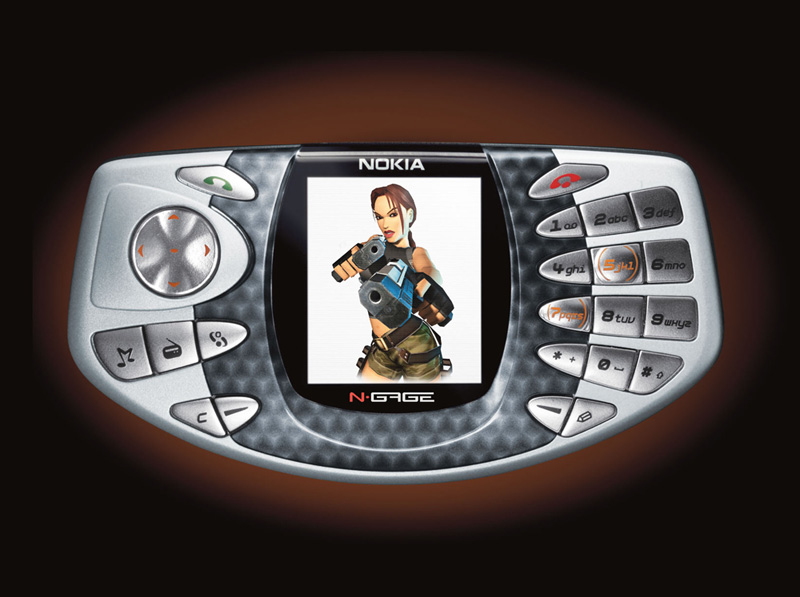
Inspired by the success of their budget solutions for JAVA, Nokia is simultaneously working on the first smartphones of the new generation of the company, at that time not its own, SymbianOS. It is with her that the new period of mobile games is marked - the emergence of a mobile gaming platform - N-GAGE.
The high demand for Java midlets, even at their high cost, and the Finns thirst for experiments, all these factors took physical form. At the end of 2003, Nokia solemnly presented the first, as they said, phone-gaming console. With insanely unusual design and controversial ergonomics.
The iron used in the smartphone, quite gave out a decent picture. Which even after 6 years surpasses today's 3d Java games on phones.
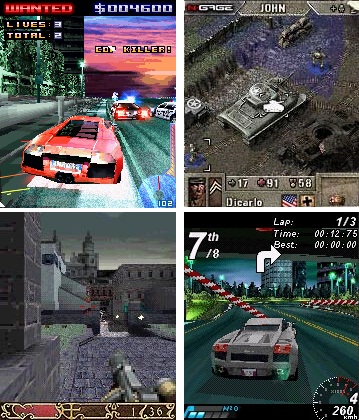
The list of games is also pleasing to the eye. Nokia agreed with the main gaming distributors, and soon N-GAGE released such projects as: Tom Clancy's Ghost Recon: Jungle Storm, Tom Clancy's Splinter Cell: Chaos Theory, a series of games about Lara Croft, Tony Hawk's Pro Skater, even had strategies , represented by Warhammer 40,000.
And what about the platform exclusive developed by Gameloft - Asphalt. Yes, the famous game, the fifth of which is one of the best iPhone games, was developed specifically for Nokia.

A complete list of all games created for the platform can be found on Wikipedia. Another difference in N-GAGE as a platform was the social component. The device was preinstalled with an agent program called the N-GAGE Arena, which gave access to the online table of records to various communities. Nokia was very proud of the possibility of chatting between players during the game, which, as they said, was supposed to change the approach to SMS. It was in the gaga games that the concept of multiplayer via Bluetooth was first proposed.
But, what ruined such, on the one hand, perspective platform?
The first stumbling block was the console itself. As a portable console, it was almost perfect, no doubt. But as the phone caused big problems. For example, the speaker and microphone, which were located on the top edge of the smartphone, were located very incomprehensibly. Many who bought the device complained that you could not talk on the phone for a long time, it was too inconvenient to hold in hand.
The second pebble was followed by a way to distribute games. Instead of somehow organizing online storage, the company went the other way. Separate copies of games were sold on separate memory cards. Yes, in order to buy the game you had to pay for the memory card. which, by the way, was worth the money. It got to the point that not a single game was sold in Russia legally, only a year later, Nokia still opened the flagship salon in Moscow, where these cards lay. Soon, folk craftsmen were able to screw the N-gage game to the company's usual smartphones, which again did not play to the benefit of the N-GAGE, like a console.
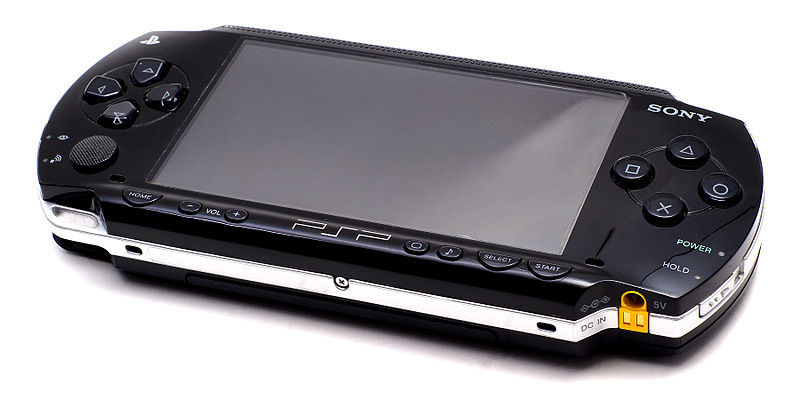
And finally, the last and not stone, but a whole rock, served as the exit of the PSP. After about the release of the N-Gage smartphone, the first PSP appears on the arena, which tears and blows the portable gaming of the world, especially the CIS. Even the release of a later, better version - N-GAGE QD, did not save Nokia from failing in the direction of mobile games.
After the failed N-GAGE project, none of the manufacturers risked launching such services and devices. Even Sony Ericsson did not release the so-desired PSP-phone.
3. The release of a record number of Java games

In the spring of 2005, the Japanese-Swedish tandem releases a telephone that has technologically managed to overtake competitors for several years. It was the Sony Ericsson K750i. With innovative software developments platform, it was he who became the first multi-tasking phone in the world. Even so, after the official death of the platform, the SE A1xx platform is very advanced.
Nokia phones (S40), even after 5 years, do not have multitasking, with the exception of standard applications (radio, music player).
It is this phone model with its revolutionary platform that opened a new stage in the development of Java applications. For CE phones in a short time comes the weight of toys. A distinctive feature of which, high visual design, a new level of quality development. Java games are beginning to be written by top players in the industry, EA Mobile is formed, Gameloft rises, mainly due to contracts with Ubisoft.
The real hits are no longer ports from older platforms, but new projects created specifically for mobile.

An example of this is Gravity Defied, the game is a symbol of the era.
4. N-GAGE 2.0, sunset without dawn

In 2007, Nokia again attempted to seize the mobile gaming market. This time with an already refined concept.
Namely:
- the company refused to release individual, non-standard consoles, now H-gage was supported by almost all smartphones coming out after 2007.
- Distribution of games is done only online.
- Better support, constant client updates.
- All games were added to the N-GAGE GAMES client program in the smartphone menu, from there you could also download new games and chat with friends.

As you can see the concept has changed. The fleet of supported devices has greatly expanded. Now it was not necessary to sacrifice a normal phone for the sake of games. All available applications were concentrated in one place. Client updates came out at regular intervals. The starting set of games for purchases did not shine with a long list, I remember there were about a dozen toys. On the official website, it was promised that in six months a lot of games would come out, and you can not worry, just show patience.
But just in half a year, the first problems started, there were no promised games. The developers simply refused to write for the gaga. After such statements, journalists took up the issue of games and found out that in order to develop something on the N-GAGE, Nokia is required to pay considerable deductions. And the company itself did nothing to resolve the existing problem, as if it does not exist.
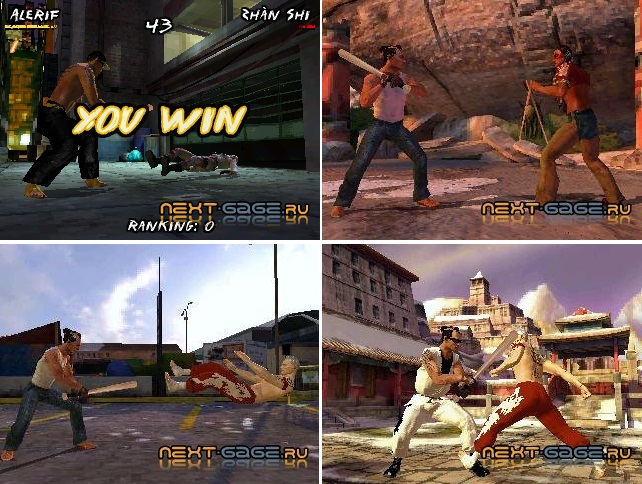
Yes, the exclusives that were developed by the Nokia itself were good, and again there is no dispute. But there was absolutely no support from third-party developers, except for isolated cases. And who needs a gaming platform without games? It is not strange reincarnation of N-GAGE 1.0 lived even shorter than the first version.
The main reasons for the collapse of the second generation platform:
- The lack of games and the desire of the company to somehow help developers
- Weak iron devices. In fact, it produced a picture at the level of the first generation of eider.
- Lack of hardware support for OpenGL 2.0, which means significant developer costs for porting games
- Appearing in the arena of the iPhone, and the main store of the AppStore, where you could easily write and easily send your application / game for sale
Fans of the service begged Nokia to do something, but apparently the apple company knew better what developers needed than Nokia. And it happened on October 31, 2009. N-Gage 2.0 is recognized as a closed, deceased platform. And it’s a pity, with such opportunities, and most importantly, resources like Nokia’s, a quite successful project could come out.
5. The emergence of a new player - iPhoneOS (now iOS)

And so on January 9, 2007, was the office. presented the first Apple phone. No one could imagine that he could make this apparatus. I suggest reading the review of iPhon for 2007: mobile-review.com
Sometimes funny excerpts from a review three years ago: “Which of the following is on the iPhone? Well, this device does not have a single game, and in the absence of hardware keys, a large number of them should not be expected. Accordingly, the game component is absent as a class (we cross out a large reservoir of young people). ”
The iPhone presented a revolutionary approach to working with the phone. Then, most analysts did not take seriously the prospects of a buttonless smartphone. But the company's brilliant strategy, flawless support for the device, constant software improvements, the opening of the online program store, ensured the project was discouraging.
So, starting from the third generation (iPhone 3Gs), the smartphone received the most powerful iron stuffing, allowing the developer to easily port old ones and write new applications / games.
Before the advent of the third generation of the smartphone, the makings of an ideal portable gaming platform were already visible, the only brake was poor performance. Well, came out iPhone 3Gs, with advanced iron. What made the developers start as frantic to write under iOS?
Firstly, it was already the third unit of Yabloko, which made the model recognizable on the market and its circulation was measured in millions. Secondly, the company's support in the software sense. Everything was done in order not to squander money from programmers (as Nokia did), but on the contrary, to make programmers earning money in the AppStore, tell about it to their friends - a programmer. Thus, a closed ring was formed: the more applications they create for a smartphone, the more people will buy it, and the more people will buy it, the more there will be downloads of these programs / games, that is, more profits to the authors.
So, starting with the fourth generation of the iPhone, a preloaded menu item appeared in it - Game Center. Such an analogue of the N-GAGE Arena. The objectives of the center are the same as that of the client from Nokia, online ratings, communication in various communities. Now in the Apple store about 300 thousand applications, 25% of which are games.
The funny thing is that, it seems, the smartphone should have killed smartphones, but it happened that N-GAGE iOS did not stop. The graphics level of the 3Gs / 4 games sometimes corresponds to the PSP, or even surpasses it, which led to a wonderful situation. For example, what the consumer chooses, the same game is present for iOS and PSP. The level of graphics is identical, all the possibilities in the game are comparable. But in order to put a toy on the PSP, you need to go to the store and buy a UMD disk for $ 15. But, in order to play on the iPhone / iPod touch, you need only one touch to go via the Internet in the AppStore, click on the icon and download it to your phone for $ 5.99, then play. What would you choose?
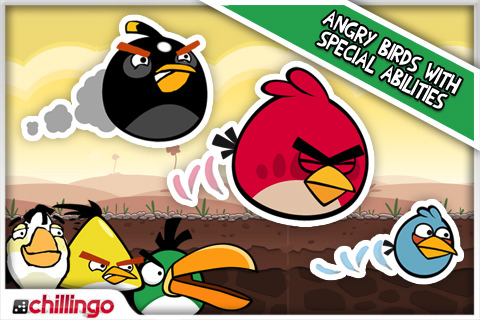
The next blow for Sony was the appearance of the iPad, but not about that now. In general, today iOS for the developer represents the easiest way to enrichment, an example of this is the super hit from Rovio - Angry Birds.
By the way, statistics from the AppStore in Russian, as well as about Angry Birds in English.
Today, iPhone / iPad / iPod touch devices are the best portable gaming devices in the world. And by buying one of these latest-generation gadgets, you can be sure that you have the most advanced device of its class in the world.
6. Prospects, rumors.
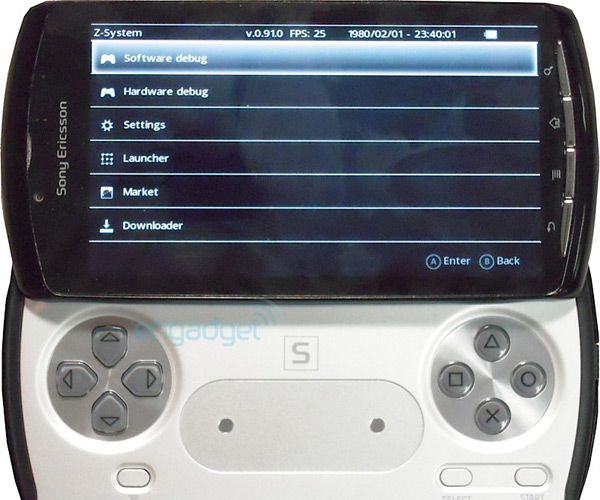
The rumor about the PSP Phone was still very given, I mentioned this. But what appeared on Engadget, a month ago, says that SE still motivated Sony to blur the Playstation Portable brand. For a long time, the company “broke down” but the success of the apple phone in the war with the PSP was still inspired by Sony to share the name.
Is there any chance of such a device? Well, rather no than yes. The iPhone showed that the lack of "real" keys to control games is not a problem at all. And the need for a slider is not needed as such. Another thing is piracy. In the photo, the PSP Phone runs on Android, which means the games for it will be written for Android. Historically, SE is not a leader in the AndroisOS direction; in fact, the campaign is nowhere to be a leader. And now for me the secret is how SE will prevent the launch of “exclusive” games on the PSP Phone, let's say on more popular HTC Desire Z or Motorola Droid2 .
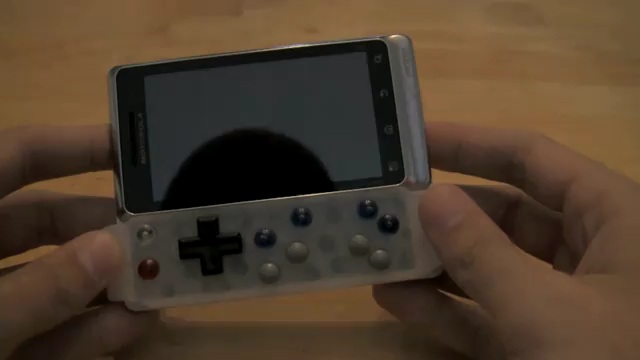
Is that the network went rumors, they say Sony will create an emulator of games for the PSP on top of Android, thank God will pull the iron, but this is unlikely. Such "sandboxes" are not written in half a year ...
Definitely the future of portable gaming is smartphones, today we are witnessing the last stage of the birth of the industry. Another year and the birth will move into a gradual evolution, as it was with Java. And even though I praised the iPhone a lot, someday it will give way, like Nokia, SE conceded. Companies are changing, games are changing, but the desire to play remains. Therefore, whatever you play, let the games always bring only positive emotions and unique nostalgia, which they brought to me today, while writing this article ...
Source: https://habr.com/ru/post/109730/
All Articles